Patterns are always needed to sew products correctly. They can be complex or simple. Everything depends on the skill of the needlewoman. This article tells about the simplest patterns for beginner craftswomen.
- What is the difference between sewing with and without patterns
- How to sew without patterns
- How to make simple patterns
- Patterns for Beginners
- Children's dress
- Knitted dress with flounces at the bottom
- Long sleeve blouse
- Summer blouse with wing sleeves
- Fitted Summer Dress
- Beautiful Dresses for Plus Size Women
- Light dress for summer
- Beach Dresses
- Blouse (jumper) made of knitwear
- Dress with stand-up collar
- Short Sleeve Swing Neck Blouse
- Blouse with wide ¾ length sleeves
- Dress with long sleeves and gathered neckline
- Cotton shorts
- Lace dress
- Summer dress with jersey bodice and straps
- Simple sleeveless sheath dress
- Flat waist bag
- Dress with draped waist
- Lightweight blouse
- Tips for Beginners
What is the difference between sewing with and without patterns
Sewing items without patterns is much easier, and it also reduces the work time by about half.
Things without drawings are usually made in several steps, with only two or three details. Sewing without patterns by hand is great for beginner tailors.
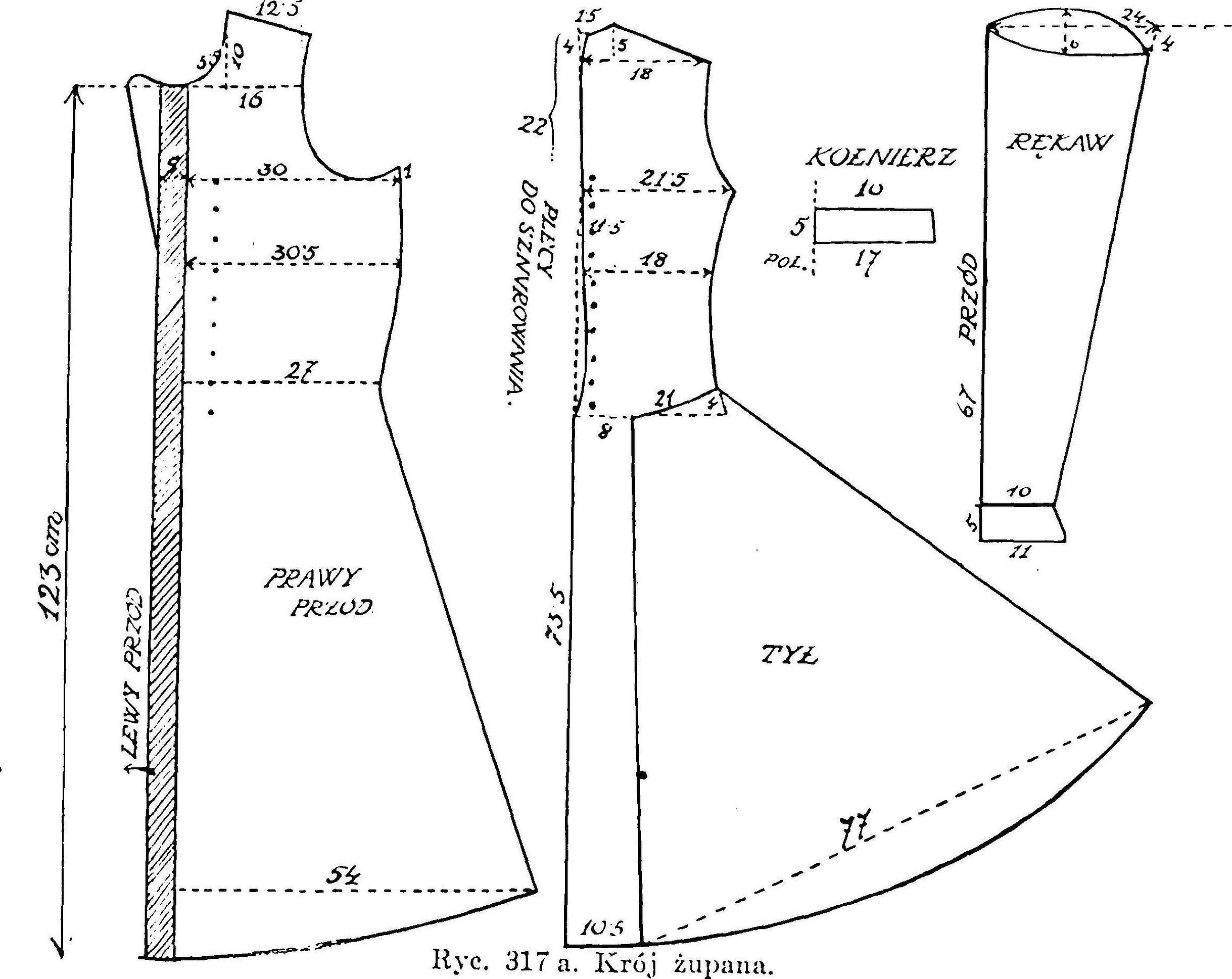
How to sew without patterns
To sew without a pattern, you do not need to set yourself a difficult task. Since there is a high probability of not coping with it. You need to try to make light and simple models. Choose the right material for sewing, 70% of success depends on this. Without patterns, you can sew an apron or a nightgown, simple T-shirts.
How to make simple patterns
Instructions for creating a diagram. It will be very good if a person has drawing skills, then it will be much easier to build a drawing.
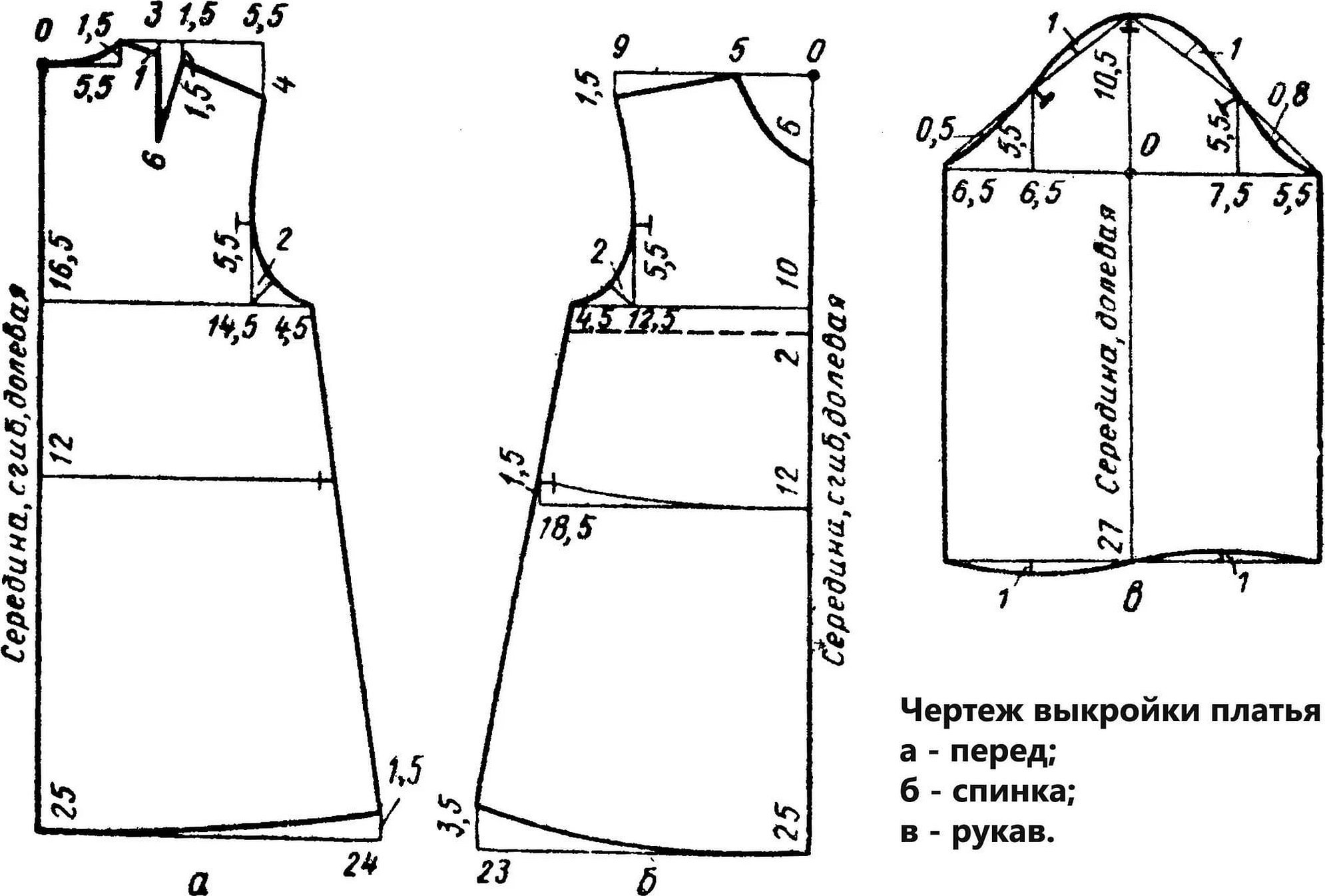
Beginner craftswomen can print out sketches on a printer and transfer them to fabric. In extreme cases, you can transfer a pattern from old things.
Patterns for Beginners
Below are some original patterns for different models of clothes. Beginner seamstresses should take these sketches into service.
Children's dress
Sew a children's dress quickly and easily yourself. You can use an old T-shirt or a sarafan as a drawing.
Lay out the Whatman paper on the surface, place the T-shirt on it and trace around it with a pen. This is how the base for the product is created. Next, you can start constructing the pattern for the T-shirt.
The lines of the drawn T-shirt will make it a little easier to construct the diagram. They will help us make a proportional silhouette of the product, where there is no need to calculate the length of the shoulder, the chest line, the size of the armhole.
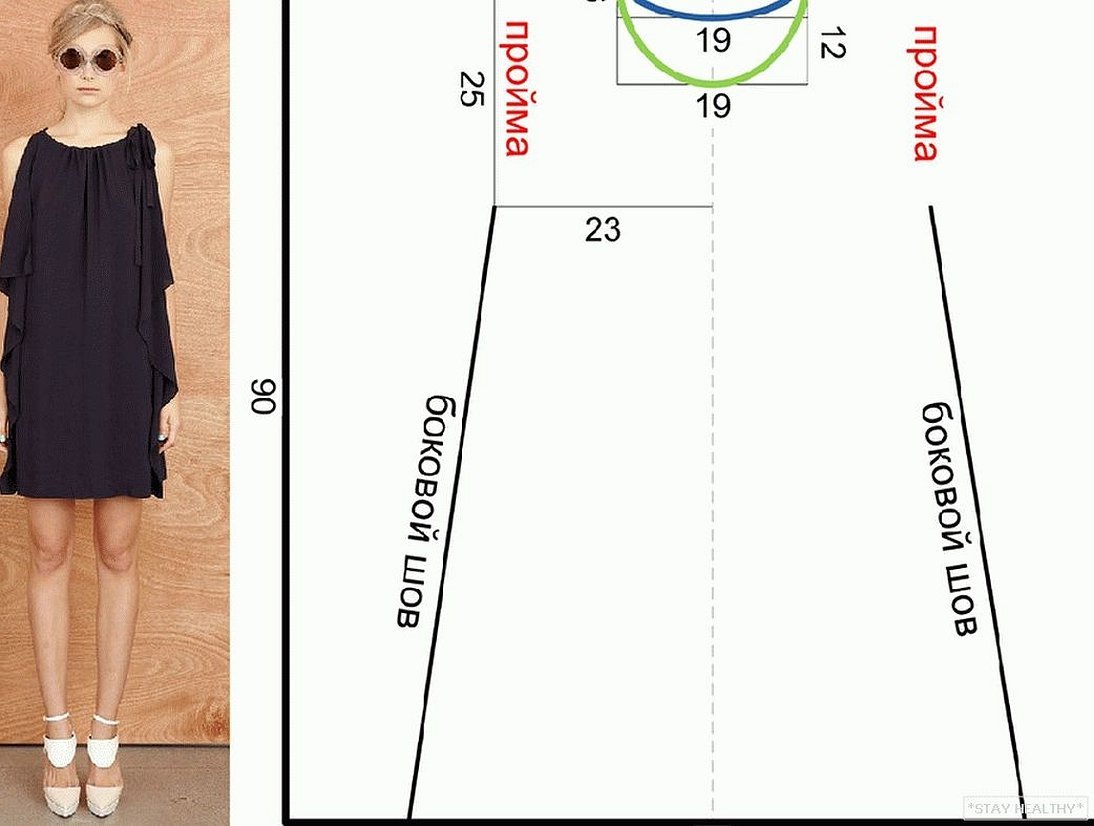
Knitted dress with flounces at the bottom
You can draw the pattern yourself or find it on the Internet. For work, you can take the basic pattern and edit it a little. Change the shoulder line and neckline. In terms of length, the product is selected based on personal preferences, but it should be wider at the bottom so that you can add flounces.
Long sleeve blouse
It should be emphasized that in this style the bust dart turns into a waist dart, but in this case you need to maintain a fitted silhouette, and there should be as few seams as possible. Waist darts are needed to emphasize the figure. To model such a blouse, it is better to use a basic drawing of a bodice with a bust dart with allowances of 2 cm and a drawing of a one-seam sleeve. You can make a stylish tunic using the same pattern.
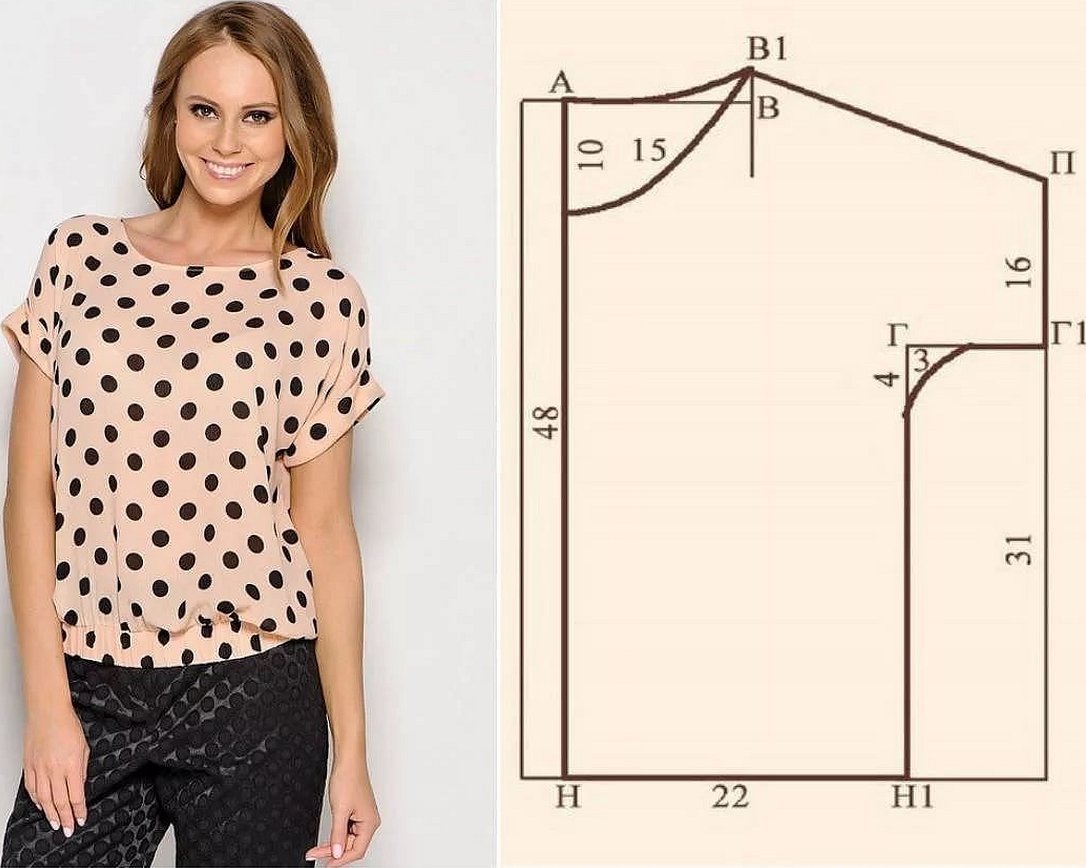
Summer blouse with wing sleeves
A clear drawing is not needed here. The sketch of the front and back should be transferred from the top of the T-shirt, they are almost identical, only the neckline is different - it is 2 cm lower on the front. Edit the back and divide it into 2 elements. Next, you need to make allowances for the product.
Fitted Summer Dress
First, you need to transfer the bust dart under the armhole. To do this, step down from the armhole 5 cm and cut along the line to the top of the dart. Then you need to close it and it will open in another marked place. The waist line needs to be raised by a few centimeters.

To make a skirt for the product, you need to edit the basic pattern. Cut along the marked lines and make a skirt extension. You can add some allowances at the bottom so that the dress does not squeeze too much.
On the back side, close the dart only halfway so that the garment is not too loose.
Beautiful Dresses for Plus Size Women
Deepen the back neckline by 3 cm. Divide the armhole depth by two and from the division mark lower the relief seam line through the waist dart parts.
For the shelf, you need to divide the armhole length into 3 elements, make a section of the relief seam to the upper third. Close the bust dart, cut along one side of the bust dart.
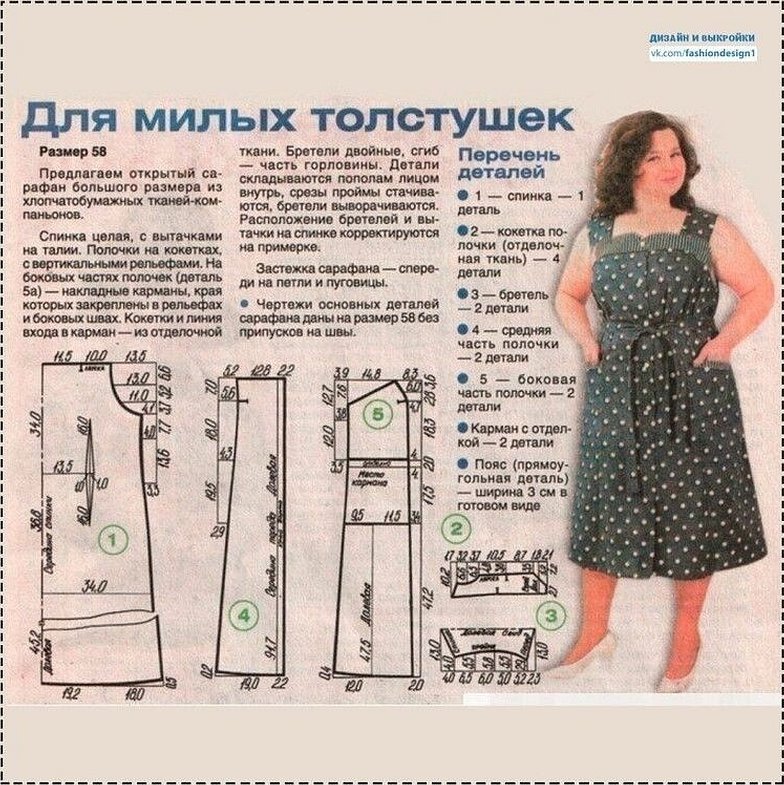
Make a model of the neckline on the front part of the dress.
To create a sleeve, use the drawing of a one-seam sleeve. It is necessary to remember about allowances, for plump women this will help to correct the figure.
Light dress for summer
The diagram is made on paper or thick cardboard.
Light dress can be from 34 to 44 size. Elements of the drawing:
- The bodice of the shelf with a fold is one piece;
- The back bodice with a fold is one piece;
- The front and back of the skirt with a fold are two pieces.
To make straps on a dress, you don't need a pattern. They are simply cut out from the remains of the material.
Beach Dresses
The sketch of a beach garment is generally similar to a square drawn on cardboard or an outline made directly on the material. Patterns for most styles are made according to the principle of symmetry of two basic parts.
More practical to work with are lightweight beach dress designs with a drawstring, based on a square sketch or a T-shirt.
Blouse (jumper) made of knitwear
A basic pattern is required for work. Below is a visual drawing.
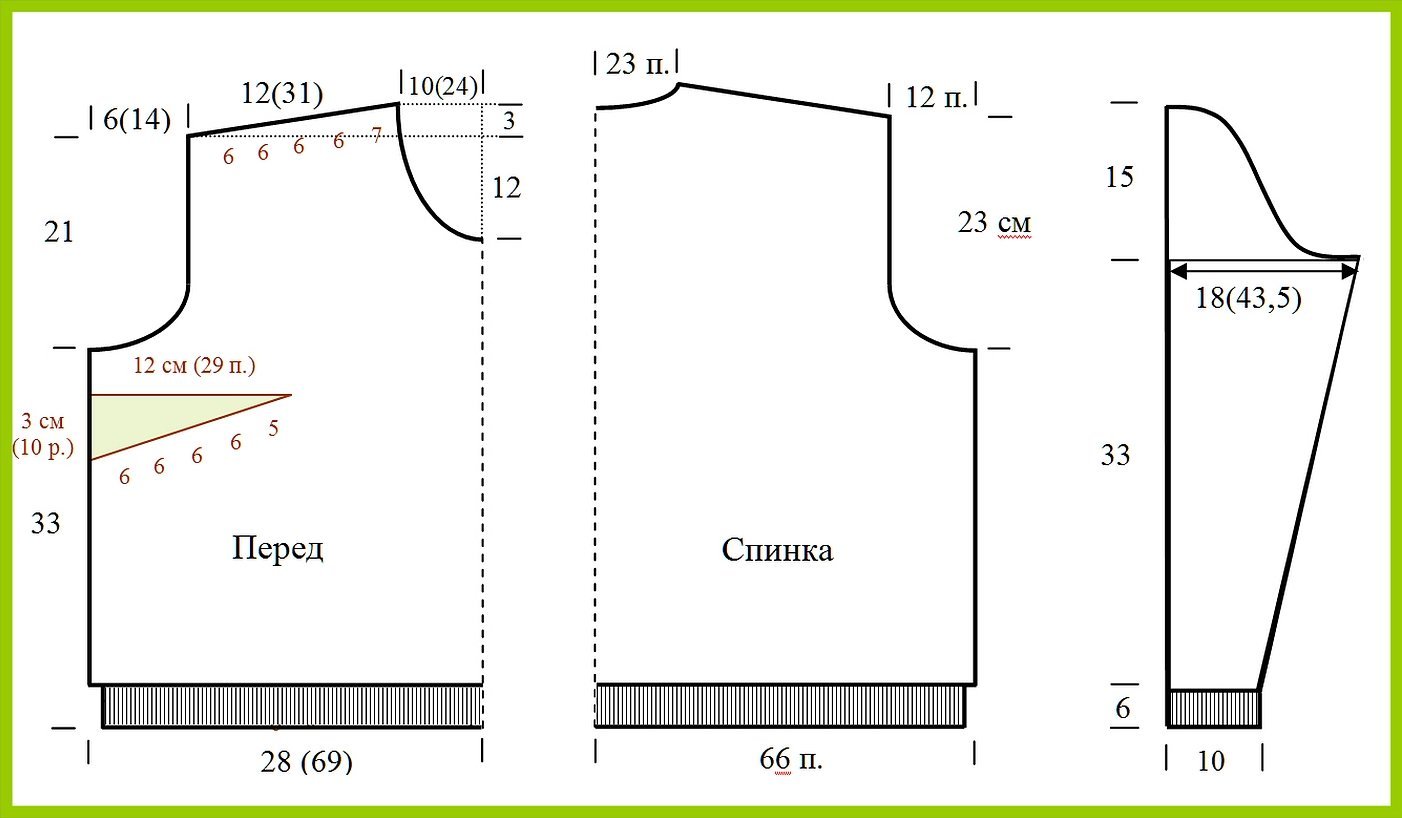
Dress with stand-up collar
First, draw the back of the dress. Along the center line of the back, draw 5 cm up from the waist line. Along the side seam line, draw 6 cm up from the waist line. Connect these marks and cut along the lines.
A line needs to be lowered to the bottom of the back. To the left and right of this line, 8 cm need to be set aside. Make slightly concave lines of the dress elements.
Next, make a diagram of the shelf. Along the side line of the shelf, draw 5 cm upwards from the waist line. Along the center line of the shelf, draw 10 cm upwards from the waist line. Connect these marks. Cut off the upper element of the bodice of the shelf along the marked line.
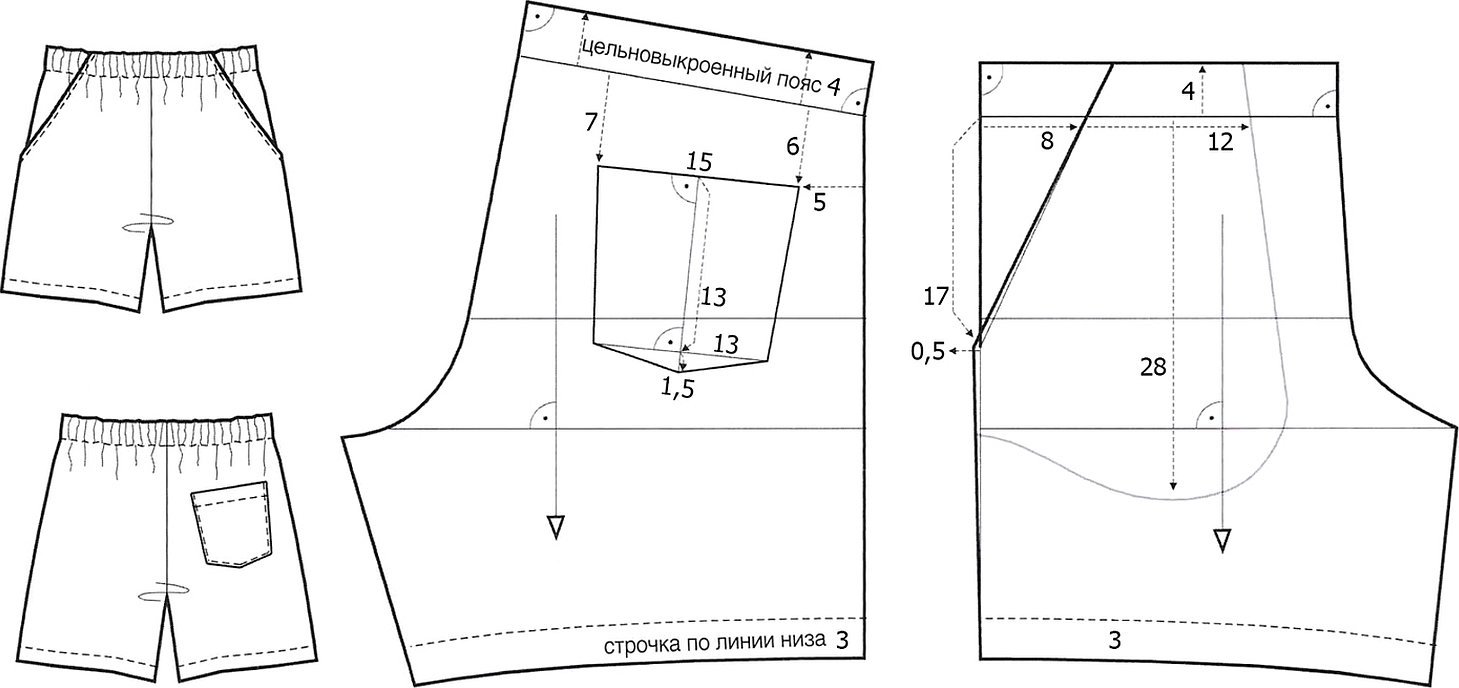
Short Sleeve Swing Neck Blouse
You need to put point A, measure 2 cm to the right from it and put mark A1. Connect mark A and A1 and draw a line up.
Mark C1 should coincide with mark T1. B1 lies between them or below point B, it depends on the length of the blouse. Point C1 should be the bottom of the center front, because the blouse is one-piece.
Connect marks A2 with point A3 and continue to the left until the intersection mark.
Blouse with wide ¾ length sleeves
This blouse model can be sewn from almost any fabric. It is important that it is easily draped and contains natural components. The drawing is well suited for work by beginner needlewomen.
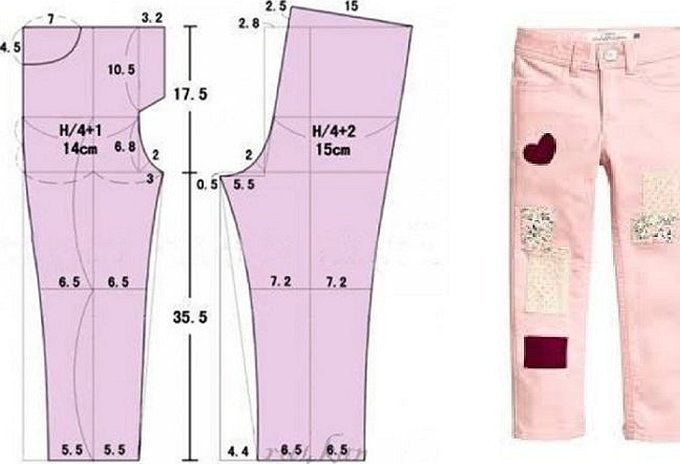
In this pattern, the most difficult element is the bust dart. If desired, the sleeves and bottom can be decorated. Allowances on the product do not need to be made, only if the figure is full.
Dress with long sleeves and gathered neckline
The pattern for this product is based on the basic pattern shown above. Allowances of 2 cm are required here for a loose fit. In addition to the drawing of the product itself, you will need to construct a pattern for a one-seam sleeve.
Cotton shorts
Summer shorts are quite easy to make. You need to build a front and a back part of the product. Then transfer it to the fabric and cut it out. If desired, you can make ties or sew an elastic band into the waistband.
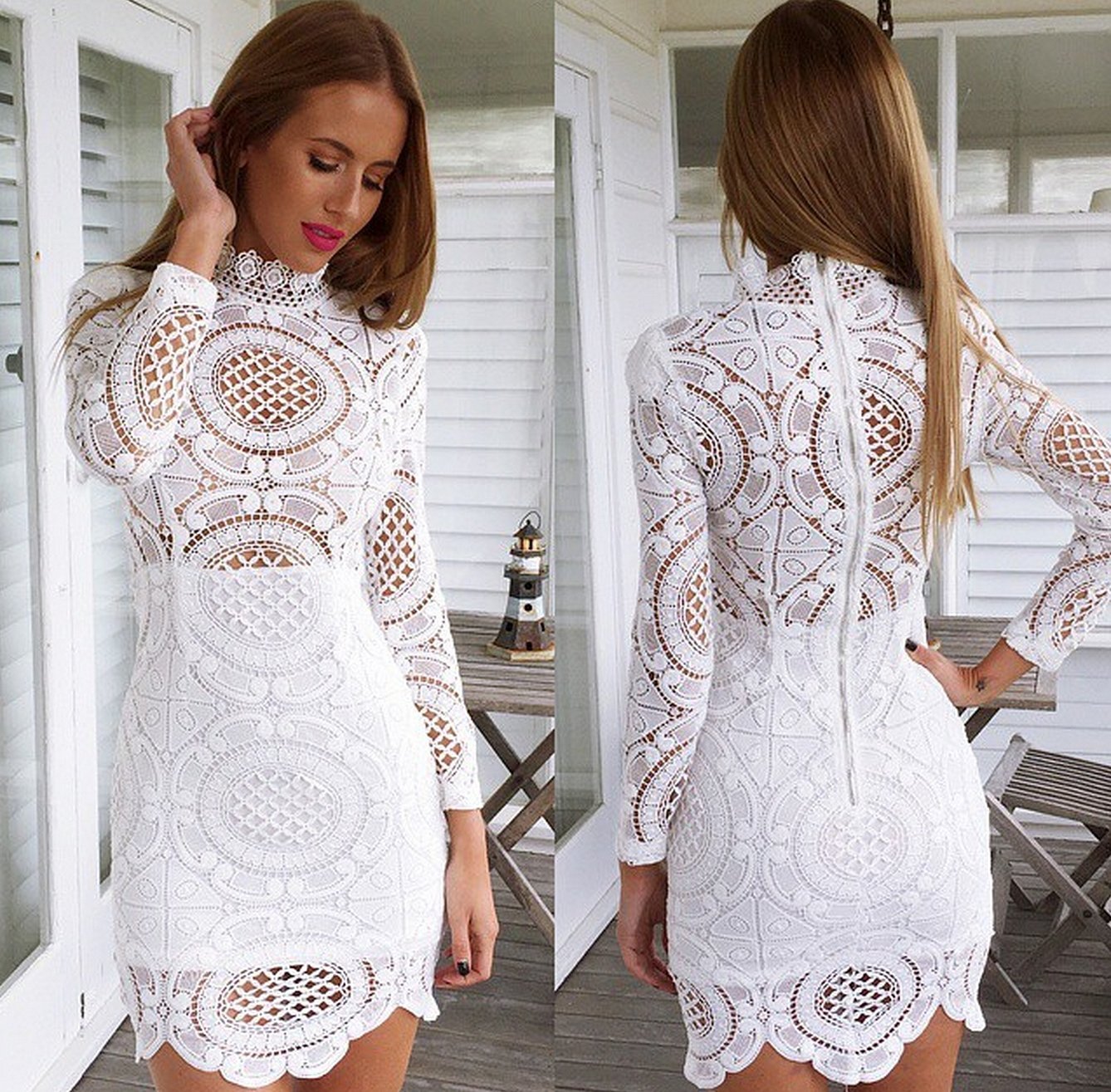
Lace dress
This dress will be one of the light models, made according to the basic pattern of a tight-fitting garment. Here it is only necessary to choose the right fabrics, the upper part will be made of lace, and the lower part, for example, of chintz. Here it is necessary to have a shirt or cotton shirt under the lace, so as not to show through the body.
It is advisable to make straps or sew elastic at the bottom of the bodice for better support of the chest.
Summer dress with jersey bodice and straps
This pattern can be used for sizes 42-48. The cut-off bodice of this product is made of elastic material, knitwear or jersey, and any fabric can be chosen for the skirt. To make it easier to construct the pattern, you can use an old dress or a sundress. Only 4 parts are needed for work. It is better to make straps from elastic.

Simple sleeveless sheath dress
The uniqueness of this product will be the processing of the sleeve and neck cuts. The cuts are processed using facings, which must be made by hand. However, if the product is sewn for everyday wear, then you can sew a classic hem 2 centimeters wide.
Flat waist bag
The cutting of the belt bag elements is done without allowances. The upper part is the basic pattern. There should be two such elements from the main material and two from the lining.
The bottom element is a pleated pocket, it should have a facing 5 cm wide and 12 cm long.
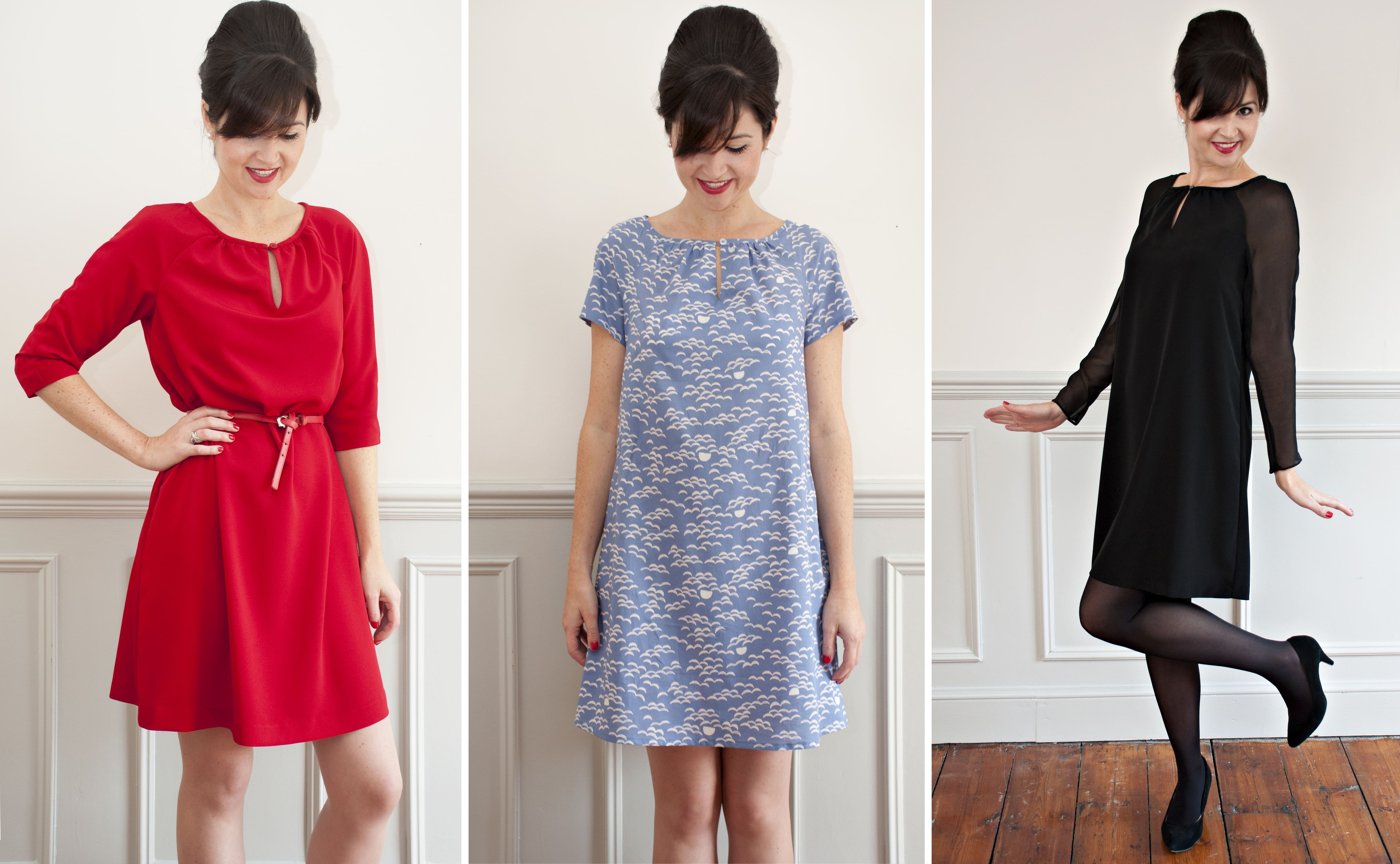
The pattern is made on paper and transferred to fabric, as in the works above. This universal bag is used to store money, documents or small items.
Dress with draped waist
First, make the back. On the drawing, you need to deepen the neckline by 3 cm, shorten the shoulder to 8 cm. Make a new sleeve line and a neckline for the back. From the hip line, draw 8 cm down and narrow it by 2 cm.
Next, model the front. It is necessary to make the same narrowing as on the back. Make the neckline of the front from the middle of the waist tangent to the neckline of the front to the beginning of the shoulder.
Draw cutting lines on the drawing. Add 2 cm allowances at the waist for draping.
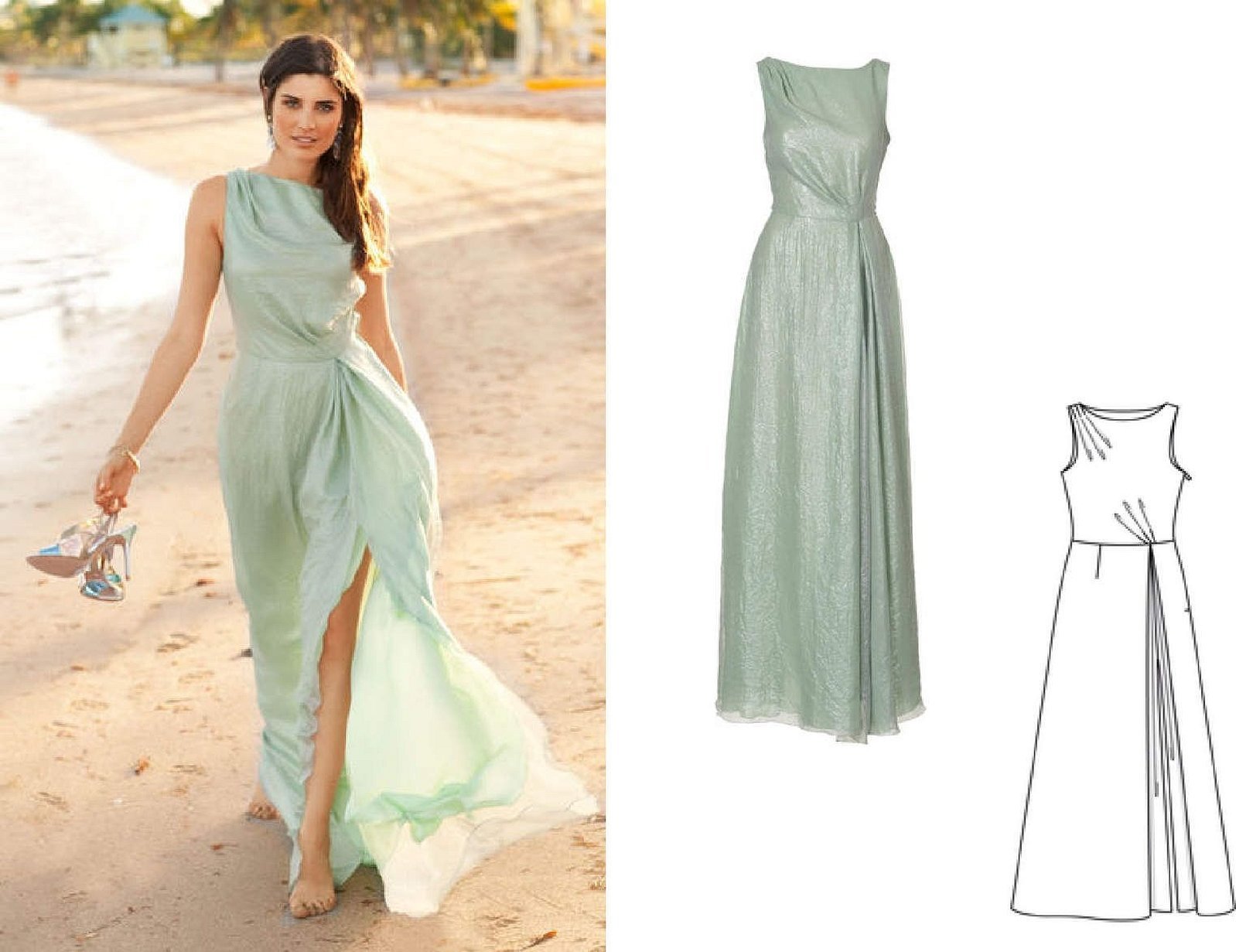
Lightweight blouse
To sew a simple blouse, you need to use a basic pattern.
Please note! The fabric should be light, for example chiffon. You will need only two parts for the work, the front and the back. To make sewing easier, you can skip the sleeves on the blouse.
Tips for Beginners
Basic rules:
- To construct a skirt template, 3 measurements are usually enough: waist, hips and length of the product. If you need to make trousers, then there will be more measurements. And to create a product, they are needed from 6 pieces, so it is better for a novice craftsman to resort to help when taking measurements;
- When laying out a pattern on a canvas, sometimes there is a difficulty in shifting the elements of the drawing. You can use thin and sharp needles and pin the pattern to the fabric. But it is better to fix the paired elements so that they do not shift even a centimeter;
- A beginner craftsman should select only simple materials. You cannot buy fabric that crumbles or shines, it will be quite difficult to handle;
- It is advisable to have a sewing machine and an overlock, because sometimes it is difficult to process all the edges of a thing by hand;
- It is advisable to use several types of scissors for work, from small ones to a large textile roller. Some materials are more difficult to cut with regular scissors, they also need to be sharpened in a timely manner;
- Needles should not be stored in a metal container as they may rust.
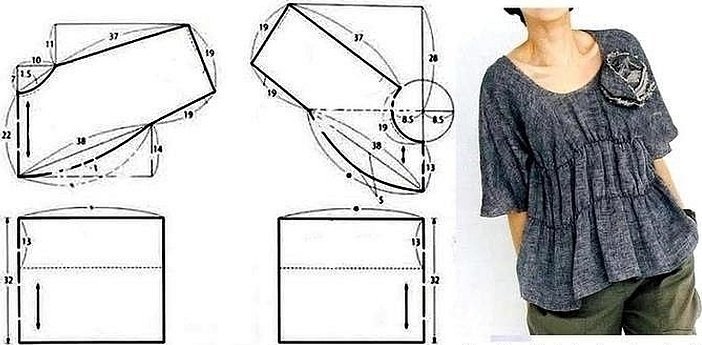
In conclusion, it should be noted that anyone can sew clothes on their own. It is important to constantly learn and try more complex work. An excellent training site for tailors is Postila or "I sew myself with patterns." There, beginners and professional craftsmen share their experience and step-by-step stages of their work. On the site, you can find unusual clothing cuts and their decoration.




